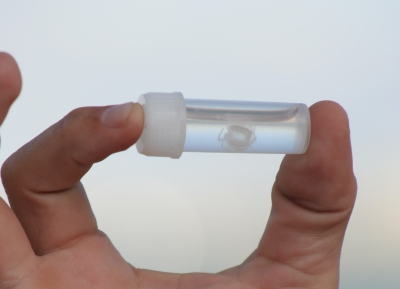
The Irukandji jellyfish found off the northern coast of Australia is one of the most venomous species of jellyfish in the world. No bigger than your fingernail, it has stingers on its tentacles as well as on its bell. It can fire stingers to inject venom into its prey. Its stings are said to cause fatal brain haemorrhages.
The Irukanji syndrome was named in 1952 by Hugo Flecker, who first described the symptoms of this jellyfish envenoming. The syndrome were named after the Irukandji people, whose country stretches along the coastal strip north of Cairns, Queensland. The first of these jellyfish, Carukia barnesi, was identified in 1964 by Jack Barnes; to prove it was the cause of Irukanji syndrome, he captured the tiny jellyfish and allowed it to sting him, his nine-year-old son and a robust young lifeguard. They all became seriously ill, but survived. Australian toxicologist Jamie Seymour made a documentary about the jellyfish called Killer Jellyfish
The Irukanji jellyfish exists in the northern waters of Australia. The southern extent of the Irukanji’s range on Australia’s eastern coast has been gradually moving south.
There has been an increased incidence of Irukanji stings reported around Great Palm Island, off the coast of north Queensland near Townsville. By early December 2020, the number of stings reported, at 23, was nearly double that of the whole of 2019, at 12.
Some are believed to have spread farther north as symptoms of the species have been experienced off the coasts of Florida, Japan and Britain.
Picture Credit : Google




